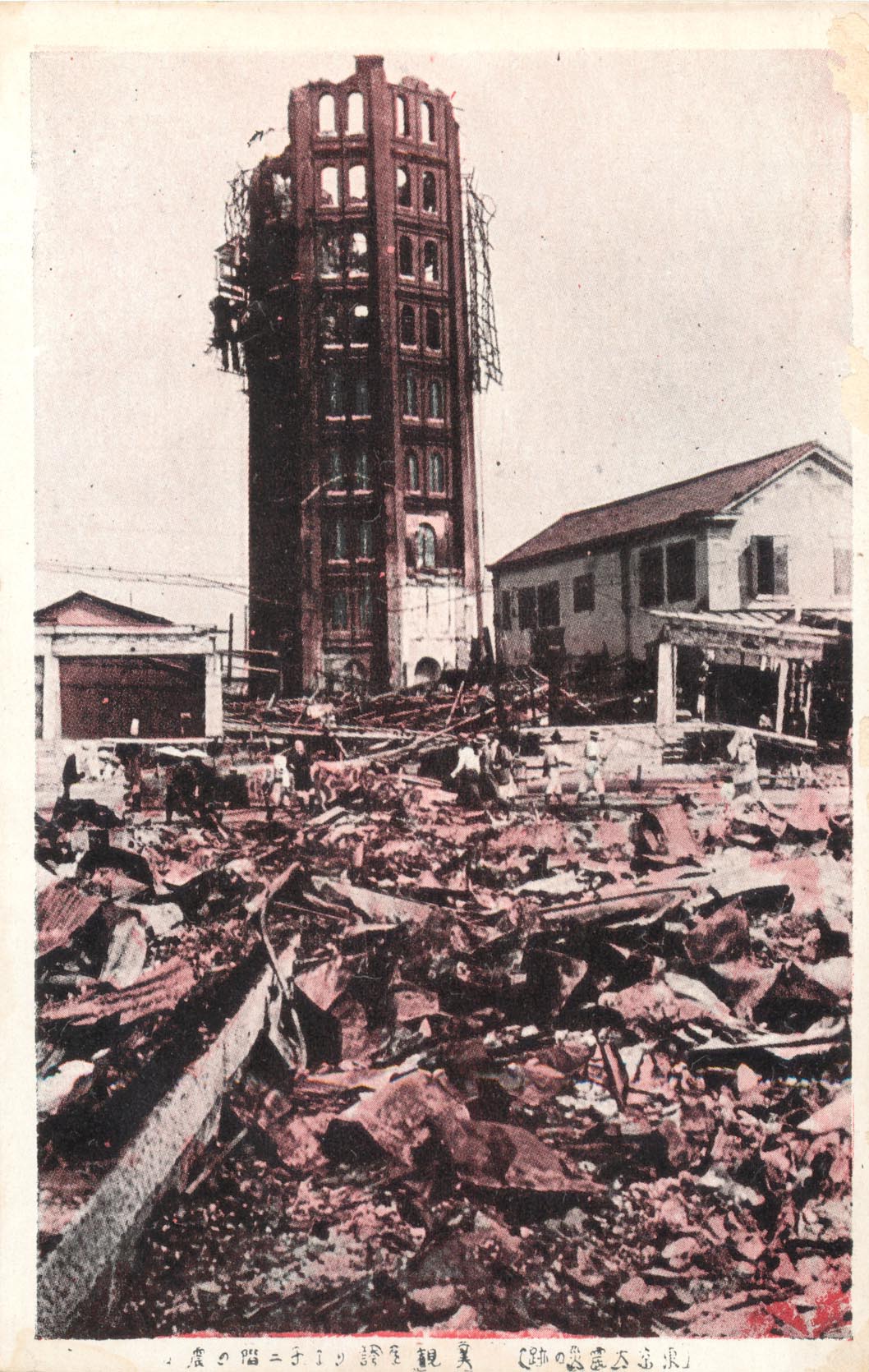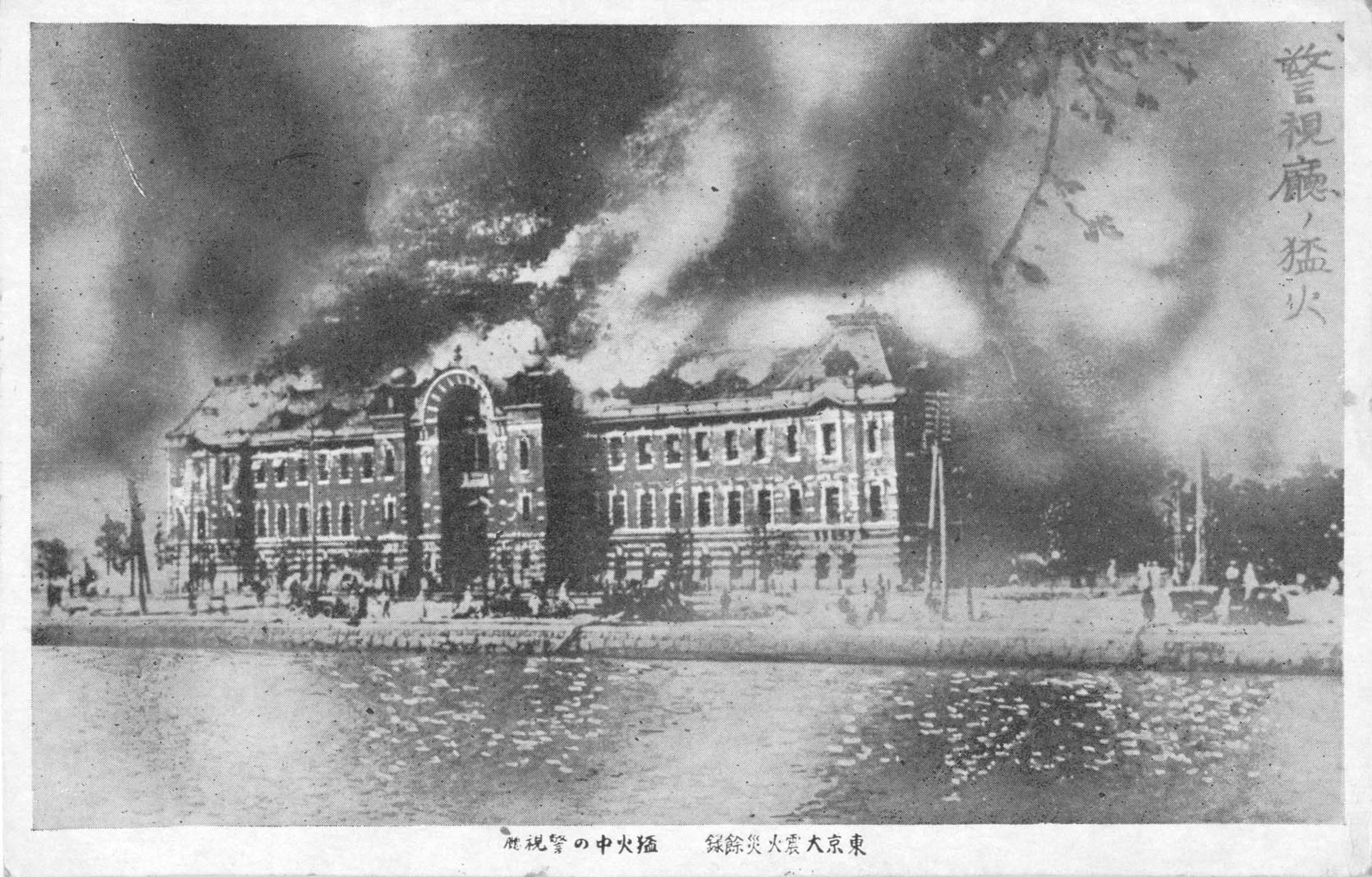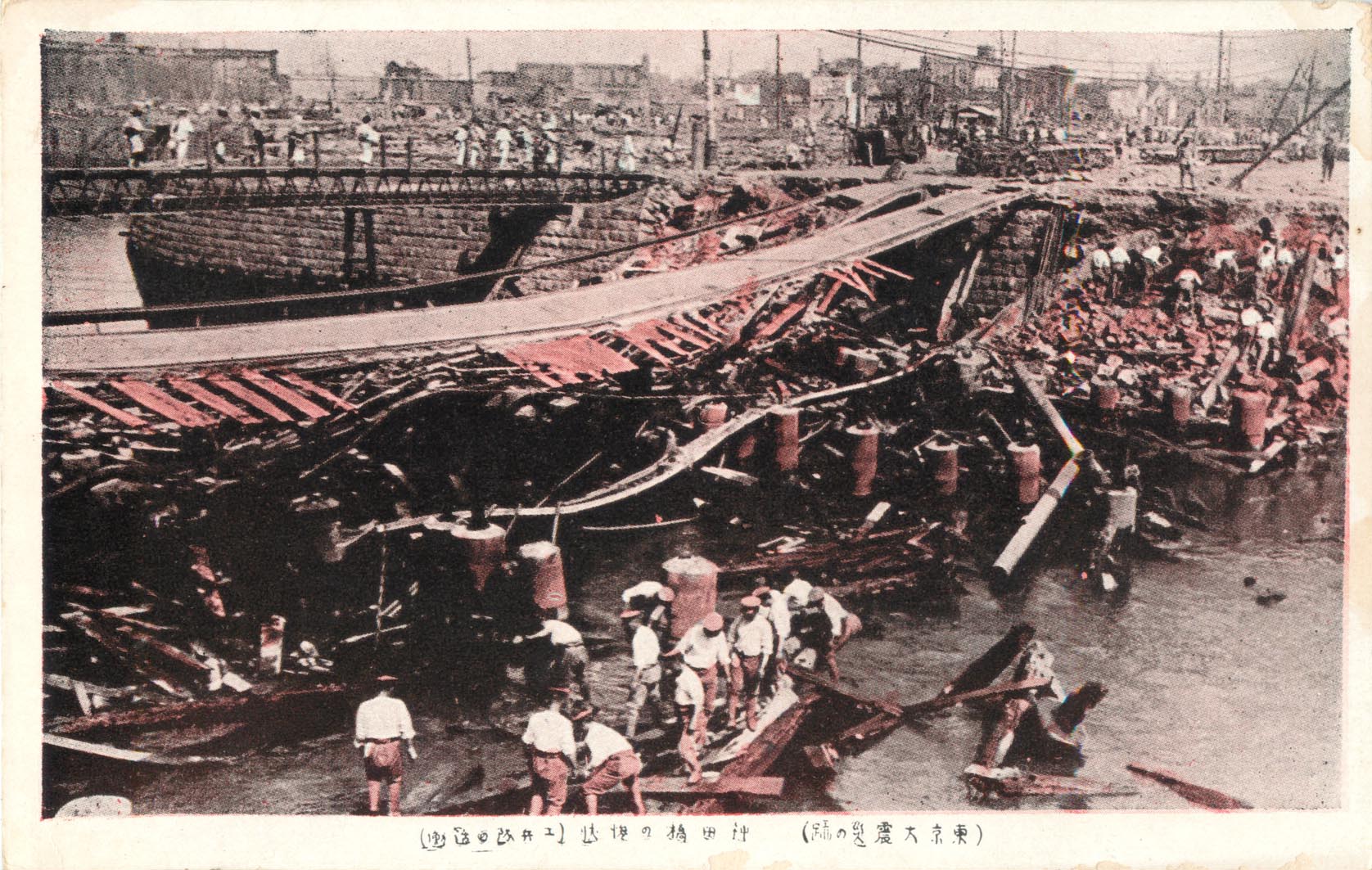| 戻 る | 目次へ | 次 へ |
 |
関東大震災と絵はがき The Great Kanto Earthquake and Picture Postcards |
||
|
大正12(1923)年9月1日に発生した関東大震災の際に、多くの絵はがきが発行されます。 新聞社は壊滅して発行を停止していたため、地震直後の倒壊し燃え盛る建物や、逃げ惑う人々などを写した絵はがきは、震災の様子を各地へ伝える唯一のメディアになりました。これらの絵はがきの多くは、質の悪い紙に印刷され、誤字脱字も多く、速報性を重視していたことがわかります。 一方で、今回展示している「房州大震災実況絵葉書」は、タイトルに「永久記念之参考資料」とあるように、震災被害の様子を後世に伝えることを目的に作成されています。絵はがきに写っている人々の様子から、写真が撮られたのは震災直後ではないことがわかります。また、震災直後に作られものに比べ、紙質もしっかりとしたものになっています。 |
|||
| Countless picture postcards were issued at the time of the Great Kanto Earthquake in 1923. Under the circumstances where the great destruction prevented newspaper companies from printing their periodicals, picture postcards depicting the immediate aftermath of the massive shock, such as collapsed and still-burning buildings or fleeing panicked people, happened to be the only medium with which to spread the stories of the catastrophe. These postcards were printed on poor-quality paper, often with typographical errors, which indicates the importance that was placed on speed. “The postcards of the Great Boshu Earthquake” on display are, on the other hand, thought to have been printed in order that the extent of the damage caused by the earthquake could be passed down to future generations, as the subtitle “Reference for the Permanent Record” suggests. Judging from the people in them, it is clear that the photographs were taken some time after the earthquake. The quality of the paper has visibly improved compared with the ones printed right after the disaster. |
|||
 |
|||
大正12(1923)年発行 燃えさかる建物、曲がった線路など、地震直後の東京の凄惨な様子を伝えている。絵はがきは、現在のSNSのように震災の様子を伝えるメディアとして活躍した。  ▲ (東京大震災の跡)美観を誇り十二階の震 |
 ▲ 東京大震火災余録 猛火中の警視庁 |
 ▲ (東京大震災の跡)神田橋の惨状(工兵隊の活働) |
 県立博物館(中央博)データベース検索:震災 震火災 地震 県立博物館(中央博)データベース検索:震災 震火災 地震
|
|||
| 戻 る | 目次へ | 次 へ |